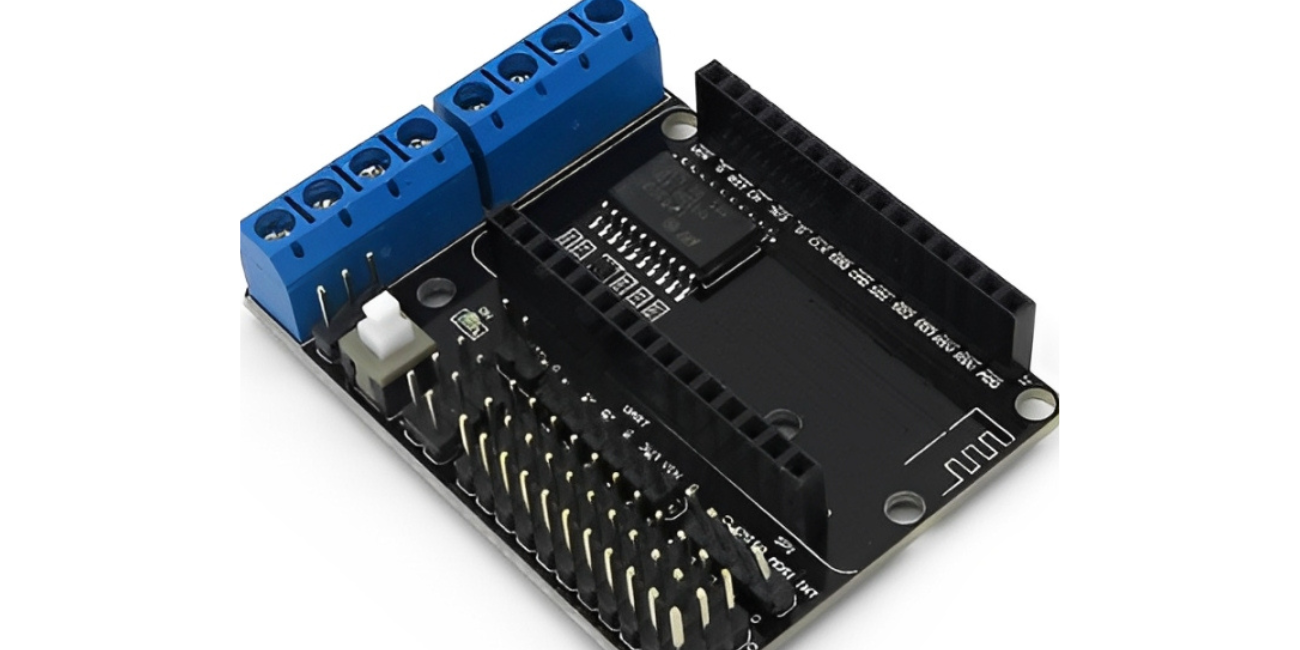
DSM Online Support
Support Master
Welcome to DSM Online
How can I help you today
How can we assist you? please let us know the support you need from DSM Online

Have you ever dreamt of building a robot you can control with your smartphone from across the room? Or perhaps an automated smart curtain that glides open with a tap on your tablet? The magic behind these ideas often boils down to two key ingredients: a brain that can connect to the internet, and muscles that can move things. Traditionally, integrating these two aspects – a Wi-Fi module and a motor driver – meant juggling multiple breakout boards, a spaghetti of jumper wires, and sometimes, a bit of power supply headache.
But what if you could have both on one seamless, powerful board? Enter the ESP8266 WiFi Motor Driver Expansion Board (L293D ESP12E). This innovative board is a game-changer for anyone diving into IoT motor control, making it simpler than ever to build wirelessly controlled robots, smart vehicles, and automated systems. If you're searching for an integrated WiFi robot control solution, your quest might just end here.
The Integrated Powerhouse: Why This Board Changes Everything
At its core, this board marries two incredibly popular and powerful components:
The Brain: ESP8266 (specifically the ESP-12E module): This is the star of the show. The ESP8266 is a low-cost, powerful WiFi microcontroller that has revolutionized the IoT world. The ESP-12E variant is a highly capable module providing ample GPIOs, robust Wi-Fi connectivity (802.11 b/g/n), and plenty of processing power for complex tasks. It handles all the smarts – connecting to your home Wi-Fi network, hosting web servers, processing commands, and sending instructions to the motors. It's the central hub for your wireless motor driver projects.
The Muscle: L293D Motor Driver IC: This classic and reliable L293D chip is an H-bridge motor driver. What does that mean? It's essentially an electronic switch that allows a low-power control signal from your ESP8266 to drive higher-current loads, like DC motors. More importantly, an H-bridge enables you to control both the direction (forward/reverse) and speed of two separate DC motors independently, or even a single stepper motor. This means your ESP8266 doesn't have to directly handle the power required for the motors, keeping it safe and happy.
The true genius of the ESP8266 L293D board lies in its integration. Instead of separate modules, complex wiring, and potential power conflicts, you get a single, compact PCB where everything is pre-connected and optimized.
Key Benefits That Make Building a Breeze:
Opting for an ESP8266 WiFi Motor Driver Board offers significant advantages for your robotics projects:
True Wireless Freedom: This is the big one! Because the ESP8266 is built-in, your project gains instant Wi-Fi capabilities. This opens up possibilities for mobile controlled robot projects, controlling devices via web interfaces, or integrating them into your smart home network. No more tethered robots!
Simplified Wiring & Assembly: Say goodbye to breadboard messes and tangled jumper wires. The motors connect directly to screw terminals, and the ESP-12E is neatly integrated. This drastically reduces assembly time and the chances of wiring errors, making it ideal for rapid prototyping and educational purposes.
Compact Form Factor: Integrating two major components onto one board saves valuable space, which is crucial for building small robots, compact smart devices, or fitting into tight enclosures. It's a neat and tidy solution for smart car ESP8266 builds.
Dedicated Power Management: Many of these boards come with built-in voltage regulators, allowing you to power both the ESP8266 and the motors from a single power source (often within a specific range, e.g., 7V-12V). This simplifies your power supply setup immensely.
Faster Prototyping & Development: With less time spent on wiring and troubleshooting connections, you can focus more on coding, logic, and bringing your creative ideas to life. This accelerates your IoT development cycle significantly.
Where This Board Shines: Exciting Applications
The ESP8266 WiFi Motor Driver Board L293D ESP12E is perfectly suited for a wide range of captivating robotics projects and automation tasks:
WiFi-Controlled Robotic Cars: Build your own remotely operated robot car that you can steer from your phone or a web browser. This is a classic ESP8266 robotics project.
Smart Home Automation: Motorize blinds, curtains, pet feeders, or vents and control them wirelessly from anywhere in your house (or even globally, with cloud integration).
Educational Robotics Kits: Its integrated nature makes it an excellent choice for teaching students about Wi-Fi communication, motor control, and basic robotics without overwhelming them with complex wiring.
Automated Doors & Gates: Control access gates or small doors wirelessly for convenience or security applications.
Conveyor Belts & Sorting Systems: For miniature models or educational demos, implement simple automation with remote control.
Getting Started with Your WiFi Motor Driver Board:
To begin, you'll typically need:
A USB-to-TTL Serial Converter: While the motor driver is on-board, the ESP-12E itself often requires an external USB-to-TTL converter (like a CH340G or FTDI) to upload code initially.
Arduino IDE or NodeMCU Firmware: You can program the ESP12E motor board using the familiar Arduino IDE ESP8266 motor libraries, or flash it with NodeMCU firmware for Lua scripting.
A Suitable Power Supply: Ensure your power supply matches the board's requirements (usually 7-12V) and can deliver enough current for your motors.
Unleash Your Creativity with Wireless Motion!
The ESP8266 WiFi Motor Driver Expansion Board (L293D ESP12E) is more than just a component; it's a launchpad for your wireless motion projects. It simplifies the complexities of integrating Wi-Fi and motor control, allowing you to focus on the fun part: bringing your ideas to life. If you're ready to build a robot you can control with a tap, or automate your world with smart, moving devices, this ESP8266 motor control solution is an absolute must-have for your maker toolkit. Start building your next mobile controlled robot today!